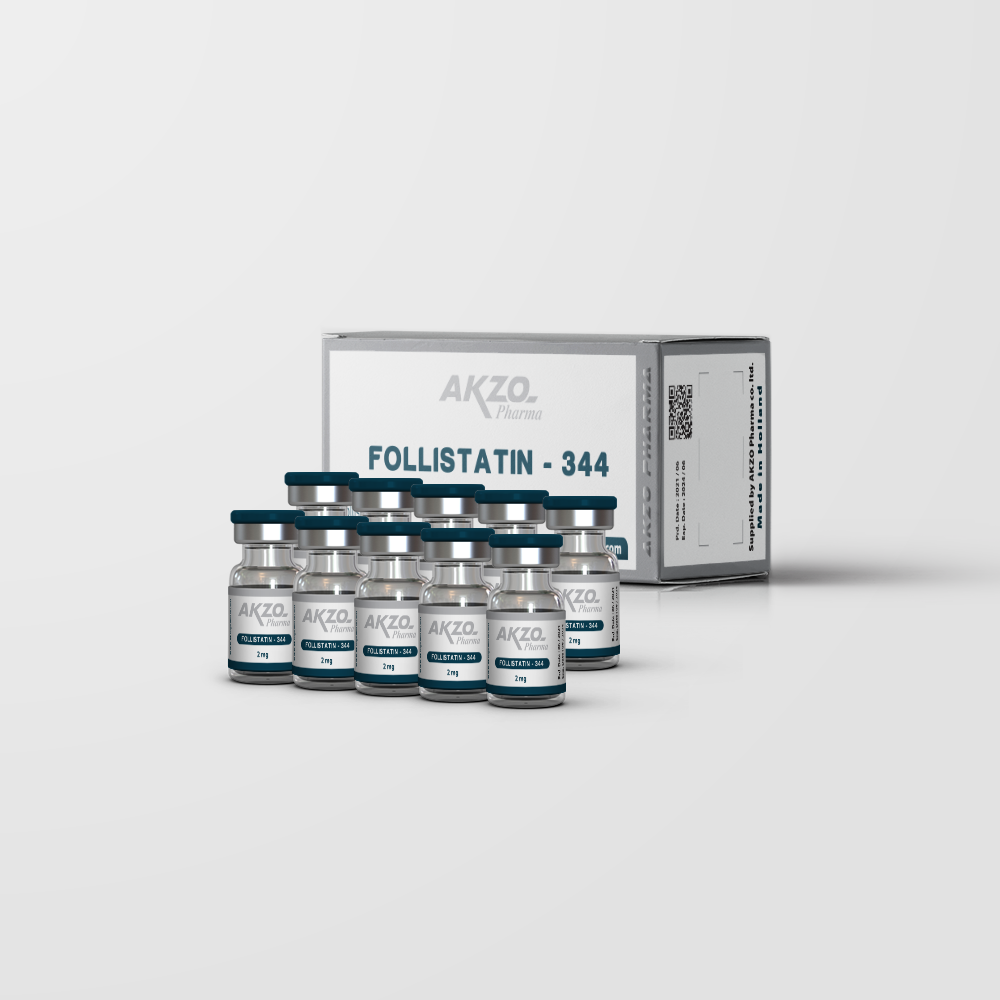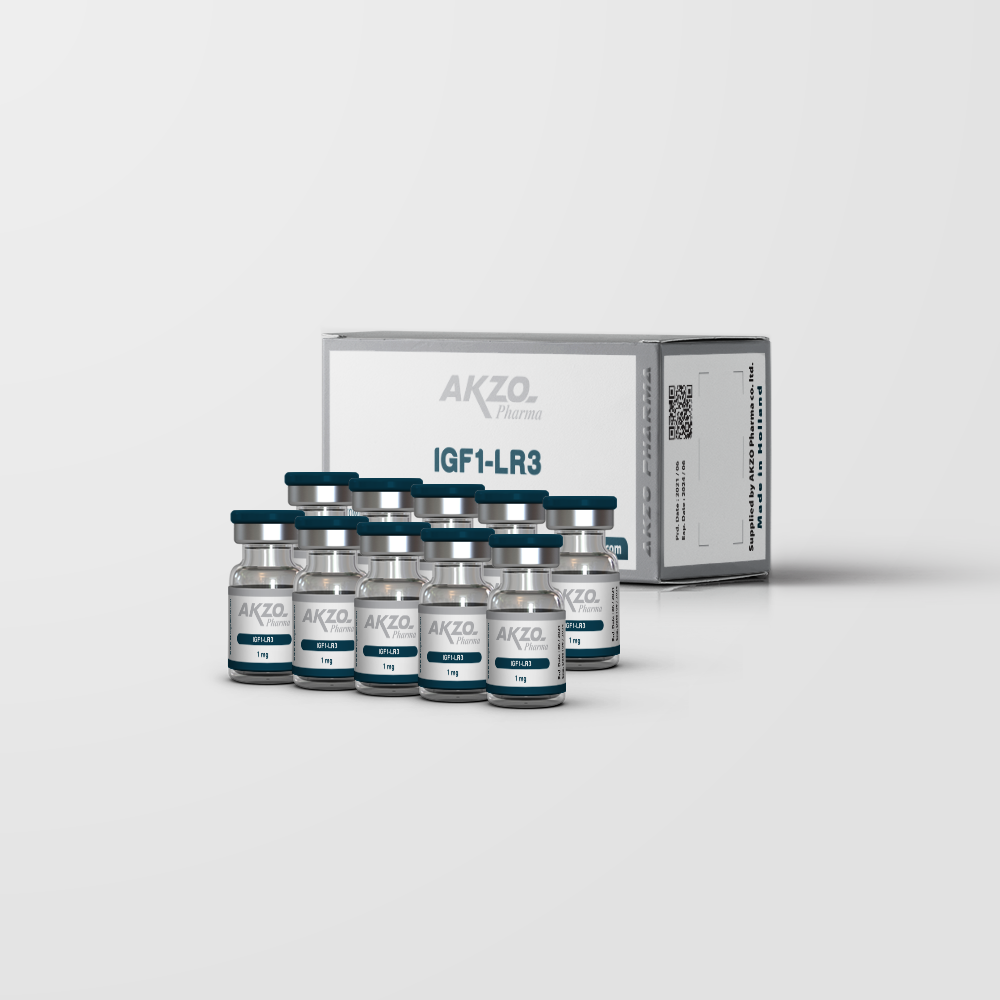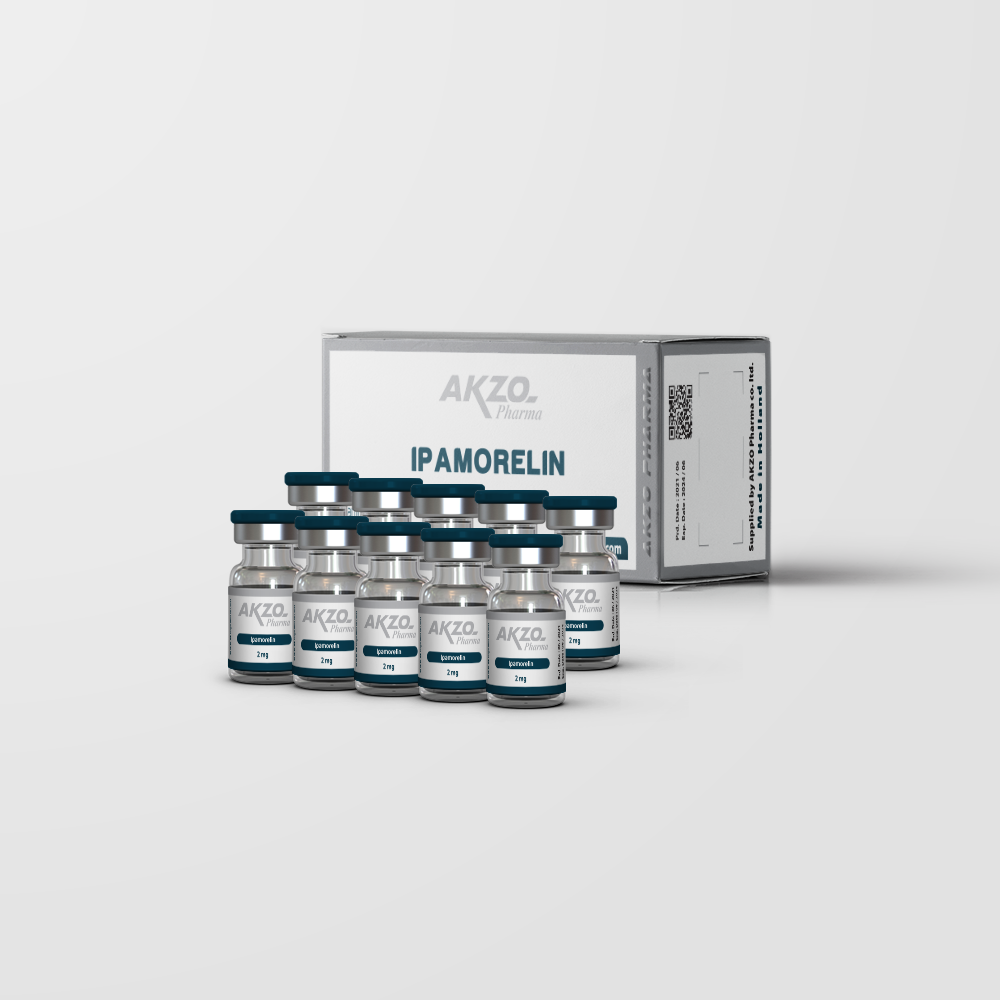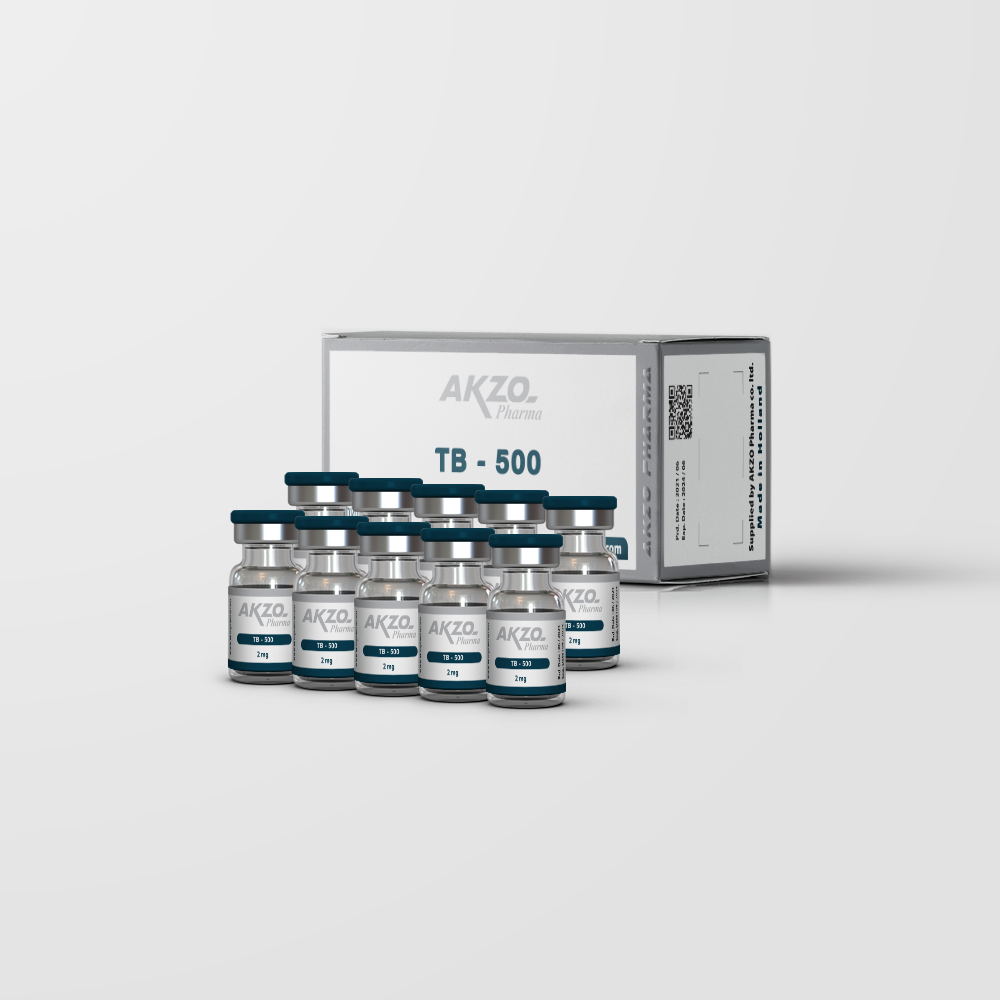FOLLISTATIN - 344
FOLLISTATIN - 344
Mechano Growth Factor
- POTENCY: 1 mg/vial.
- APPEARANCE: lyophilized (freeze-dried) white powder.
- PACKING: 10 x 1 mg/vials,
- DOSAGE: 100 mcg/day

1. Description
Follistatin (FST) is a secreted glycoprotein that was first identified as a follicle-stimulating hormone inhibiting substance CDNA encodes a 344 amino acid protein with a 29 amino acid signal sequence. Follistatin also known as activin-binding protein is a protein that encoded by the FST gene. Follistatin is an autocrine glycoprotein that is expressed nearly all tissues of higher animals. Its primary function is the binding and bioneutralization of members of the TGF-B superfamily, with a particular focus on activin, a paracrine hormone. Follistatin-344 is a sterile, non-pyrogenic, white lyophilized powder intended for subcutaneous or intramuscular
injection, after reconstitution with sterile Water for Injection (0,3% m-Cresol).
2. Mechanism of action
Follistatin, secreted as a glycoprotein, was originally identified in porcine ovarian follicular fluid and received its name
because it suppresses synthesis and secretion of follicle-stimulating hormone (FSH) from the pituitary gland.
The Follistatin gene localizes to chromosome 5q11.2. It is composed of a relatively small 6-kb genomic DNA consisting
of six exons. There is an alternative splice site that generates two major species, a full-length version that encodes a
344-amino acid pre-protein differing by a 27-amino acid sequence from its carboxy- shortened version of the 317
amino acid form missing exon 6.
The Follistatin gene consists of six exons. Alternative splicing generates two iso forms, FS317 and Fs344.
At the time Follistatin was first isolated, little was known of its mechanism of action in a major breakthrough, Follistatin was found to be an activin-binding protein. An important function of Follistatin is its collaborative role in reproductive physiology with other TGF-B superfamily members, activin and inhibins. These TGF-B family peptides have overlapping autocrine/paracrine functions. All three were initially puri fied from gonadal fluids and characterized based on their ability to modulate FSH. In addition to gonadal sites of production (ovary/testes), these peptides are all produced by cells in the hypothalamic-pituitary axis (gonadatropes and folliculostellate cells). Follistatin binds activin and attenuates the release of FSH. Activin is secret ed by the follicle of the ovary and serves to enhance FSH secretion. Inhibins, which are secreted in two forms (A and B), inhibit the release of FSH at the hypothalam ic-pituitary level. In addition, it is well documented that Follistatin can abrogate the effects of GnRH in stimulating FSH secretion. This is also due in part to the block ing of transcriptional activation of the GnRH receptor gene by activin.
Follistatin is produced locally in the pituitary gland and in gonads, ovaries, and testes. Overall, measurements of
Follistatin during the menstrual cycle show few changes. However, a notable exception is during pregnancy, when
Follistatin concentrations rise toward term in parallel with activin. Foilistatin is widely distributed throughout multiple
organs, and the majority of Follistatin found in the circulation is likely secreted from the walls of blood vessels.
In conclusion, Follistatin seems to operate by binding to Myostatin and inhibiting Myostatin binding to the activin IIB receptor. However, in a study done by creating mice without genes for this receptor the results were unexpected. The results show that knockout mice for the activin receptor liB were much more muscular than nor mai control mice but the Follistatin group were significantly more muscular than either the control or activin knockout group. This shows that Follistatin does more than just inhibit the activin receptor IIB. In one example the muscle mass was increased 194% -327 % with 66% increase in muscle cell count and 28% increase in muscle cell size. This shows that although Follistatin is a Myostatin inhibitor it may be the best non-steroidal mass builder for other reasons. One hypothes is this, was that Myostatin is a member of the TGF Beta superfamily. In this family there are cross receptor activations. Perhaps the Follistatin inhibited the binding of other TGF family members to their respective receptors
3. Adverse reactions
It has been determined through scientific study based on animal test subjects that there are no negative side effects that have been linked to the presence of Follistatin 344. Despite the fact that there are still ongoing studies that are being conducted in order to determine if there is any correlation that could conceivably link a muta tion of the peptide with polycystic ovary syndrome, it should be reiterated that such studies do not involve instances of Follistatin 344 that are considered to be non- mutated in its form. As of now, there has been no negative association linked to Follistatin 344’s non-mutated iteration.
4.Instructions for reconstitution
Powder must be dissolved only with the solvent provided.
1. Apply the needle to the syringe .Remove the plastic cover from the vial 2. Break the top of the ampoule containing the sol- vent. Remove the plastic cover of the needle. Make
needle is well applied to the syringe. Slowly absorb all the solvent.
sure the
3. Inject all the solvent to the vial. This will create a 0 1ma/mi solution. To prevent foaming thesovent should be injected into the vial by aiming the stream of liquid against the glass wall
4. Following reconstitution, the vial should be swirled with a GENTLE rotary motion until the contents are completely
dissolved. DO NOT SHAKE. The result- ing solution should be clear and colorless, without particulate matter.
After reconstitution, the vial contains 1 ml liquid and 0,1mg Follistatin-344. That means 100mcg/ml. For example one injection with 50mcg Follistatin-344 needs 0,5ml (or 50 units on Insulin Syringe).
5.Dosage
The recommended dose for Follistatin-344 is 50-100mcg daily, for a period between 10-30 days. It hasn’t prove that dosage of 200+mcg daily gives better results.
There is also another way that significant number of users prefer: to inject Follistatin-344 locally, into a specific muscle
that you want to bring up. In that case it is recommended to split it bilaterally into the muscle.
6.Storage
• This product can be used not more than 3 years from the production date (see box) • After reconstitution, may be stored for a maximum of 14 days in a refrigerator at 2°C-8°C Store vials in an upright
position. • Store in a refrigerator (2°C -8°C). Keep in the outer carton in order to protect from light For one month can be stored at room temperature.









